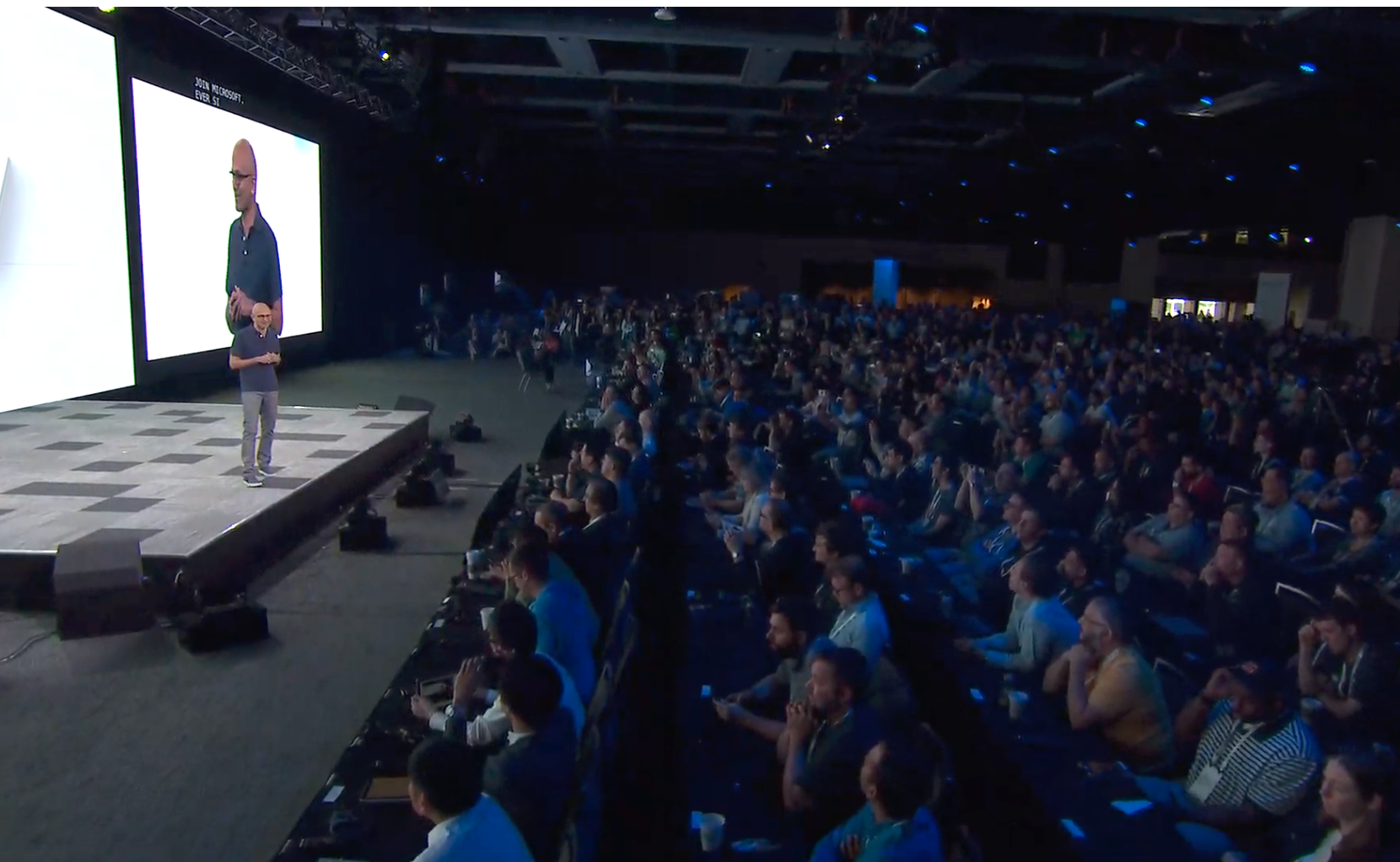


We’re in the thick of developers’ conference season. Facebook put on its F8 conference last week at which it announced a total redesign of its app and site, as well as a shifted focus toward privacy. Google takes the stage tomorrow, but today it’s Microsoft’s turn. Microsoft typically keeps things more technical than some of the other companies, but there are almost always some tidbits worth knowing about.
We’ll run down the most important announcements here so you can absorb all that fancy information in one convenient spot.
What we’re expecting
Microsoft recently revamped its browser on the same groundwork as Google’s Chrome. It’s an attempt to wash out the bad taste of Internet Explorer that has lingered in the mouths of internet users for decades now. We expect to see some updates for the new Edge browser during the event. If any of the other conferences are an indicator, it’s also safe to assume we’ll hear some talk about security and privacy.
Azure
Predictably, Microsoft is talking about the cloud first. Azure has 54 data center regions around the world including one in South Africa. Azure as a service encompasses a huge number of processes. CEO Satya Nadella touts examples of Azures uses like hospitals sharing data about cancer research to Walgreen installing cooler doors with screens in them to show consumers what’s inside without having to open them.
Starbucks is clearly a high-profile partner. Part of the Starbucks demo includes a responsive drive-through display that uses AI to try and show people food and drinks that are popular at that specific location and time. Starbucks also uses Azure to connect its coffee machines to the web. It can monitor vital performance stats and also try to diagnose problems in real-time to try and manage downtime and repair needs.

Speech recognition and transcriptions
Microsoft has been working on real-time transcription for years—it even demonstrated a microphone array hardware device last year. Now, the feature can learn industry-specific tech jargon. So, if you’re an engineer and you use a lot of specific names and acronyms, the transcription can keep up and won’t throw in nonsense when it hits a word that’s not commonly understood. The demo showed it working with both the medical and coding fields.
Cortana
Microsoft’s digital voice assistant isn’t on the same level when it comes to users as the Google Assistant or Apple’s Siri. But, Google is continuing to add new features to its disembodied helper. Microsoft’s focus for Cortana is making the whole experience more conversational. The idea is to keep the context of the conversation consistent throughout the entire interaction. So, if you’re talking about a specific meeting, Cortana will remember what you’re talking about, even if you ask several follow up questions or give more related commands.
Microsoft Edge
Right now, you can try out Microsoft’s new Edge browser on PCs, but according to the Build conference, the plan is to bring it to every platform including macOS and iOS, so you’ll eventually be able to use Microsoft’s browser across just about any device. It may not seem like a huge development, but Microsoft moving to the Chromium platform is actually an important step because it means Google and Microsoft engineers are working together on the platform. Also, Chromium is an open-source project and Microsoft’s involvement will likely funnel tons of new data into the process of refining the platform.
Microsoft’s entire presentation was largely geared toward actual developers and was relatively short on info that’s specifically relevant to consumers and other users who just want to see front-end software and hardware. Microsoft has hammered on the importance of software for years, and now the focus is largely placed on software that many users don’t even see.
Minecraft in AR

While there was a lot of technical talk at the event, we also learned a little bit about the future of Minecraft. The wildly popular game is making its way into augmented reality, which means the real world may soon look a lot like the Minecraft world if you’re looking through a headset or mobile device. There aren’t many details about the game at the moment, but this seems like the natural extension for the game. It really could be huge if it’s done right.
See you tomorrow for Google I/O.